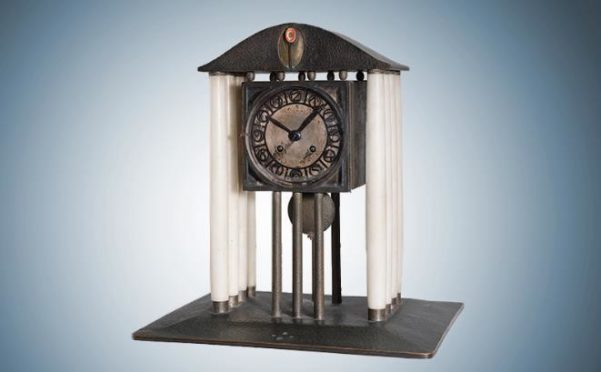Across Europe, a name which often draws oohs and aahs is Josef Hoffmann.
I recall my German friend Katrin speaking of Hoffmann’s importance in hushed tones on our visits to Berlin’s Museum Island.
The Austrian architect and designer was among the founders of Vienna Secession movement and co-established in 1903 the Wiener Werkstätte [Vienna Workshop], an enterprise of artists and craftsmen who espoused complete artistic freedom in creating avant-garde architecture, furniture, glass, metal work and textiles.
Fittingly, one of Europe’s great auction houses – Dorotheum of Vienna – recently offered a Hoffman table clock that heralded this wonderful early-20th Century creative phase.
Mid-19th Century Viennese Biedermeier style
One of two known examples, the clock’s architectural structure – with four alabaster pillars on either side – is where the mid-19th Century Viennese Biedermeier ‘solid and conventional’ style meets the new modernism which had emerged in Scotland even before the Wiener Werkstätte had been founded.
In fact, Charles Rennie Mackintosh was aware of Vienna’s growing influence.
In a letter to Hoffman, the Glasgow School designer wrote of the Wiener Werkstätte movement: “If your programme is to achieve artistic success…then every object you produce must have a strong mark of individuality, beauty and outstanding workmanship.”
The founding concepts of the Glasgow School can be observed in the hammered copper surface of the clock.
It exudes high quality and robustness; the arched, roof-like superstructure with an oval in the centre and a central gemstone, is a coded reference to the designs of like-minded Scottish artists such as the Macdonald sisters.
Hoffman returned the compliment. The clocks produced in the Austrian capital by the Wiener Werkstätte heralded the style which influenced Mackintosh’s later clock designs.
It sold for 137,000 euros, about £118,000.










